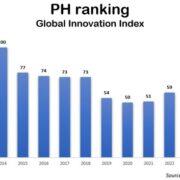Inflows of remittances from overseas Filipino workers (OFWs) amidst the pandemic is anticipated to be among the major driving forces of the Philippine Peso’s continued strength for 2021.
In a report from ING Bank Manila Senior Economist, Nicholas Mapa, cited the end-November 2020 cash remittances amounted to USD27.01 billion.
Data released by the Bangko Sentral ng Pilipinas (BSP) last Thursday, January 14, 2021 showed personal remittance, which includes both cash and in-kind current transfers, amounted to USD29.988 billion during the same period.
The BSP reported a 0.3% growth of cash remittances last November while personal remittances, which include both cash and in-kind current transfers, rose by 0.1%.
However, for end-November cash remittances declined by 0.8% and personal remittances by 0.9%, which economists and authorities attribute to the impact of the pandemic.
Mapa traced the 0.3% rise of inflows from Filipino workers abroad last November to “recent depletion in the stock of OFs (overseas Filipinos) likely weighing on flows.”
This was in result after more than 300,000 OFWs have been repatriated since the early beginnings of the pandemic.
Despite the drop in the number of OFWs to date, Mapa said the growth of remittances is “on track to close flat from last year.”
“Remittance support has been crucial in 2020 as recession grips the Philippine economy,” he said.
For decades, the remittances from OFWs are among the main drivers of the domestic economy—accounting for nearly 10% of annual output.
Mapa said the “steady remittances coupled with implosion of import demand, (is) lending support to the PHP (Philippine peso) amidst the weak global USD (US dollar) narrative.”
“2021 could see a continuation of the trend of modest remittance gains although import demand may improve marginally, bouncing from the low base of 2020,” he added.





